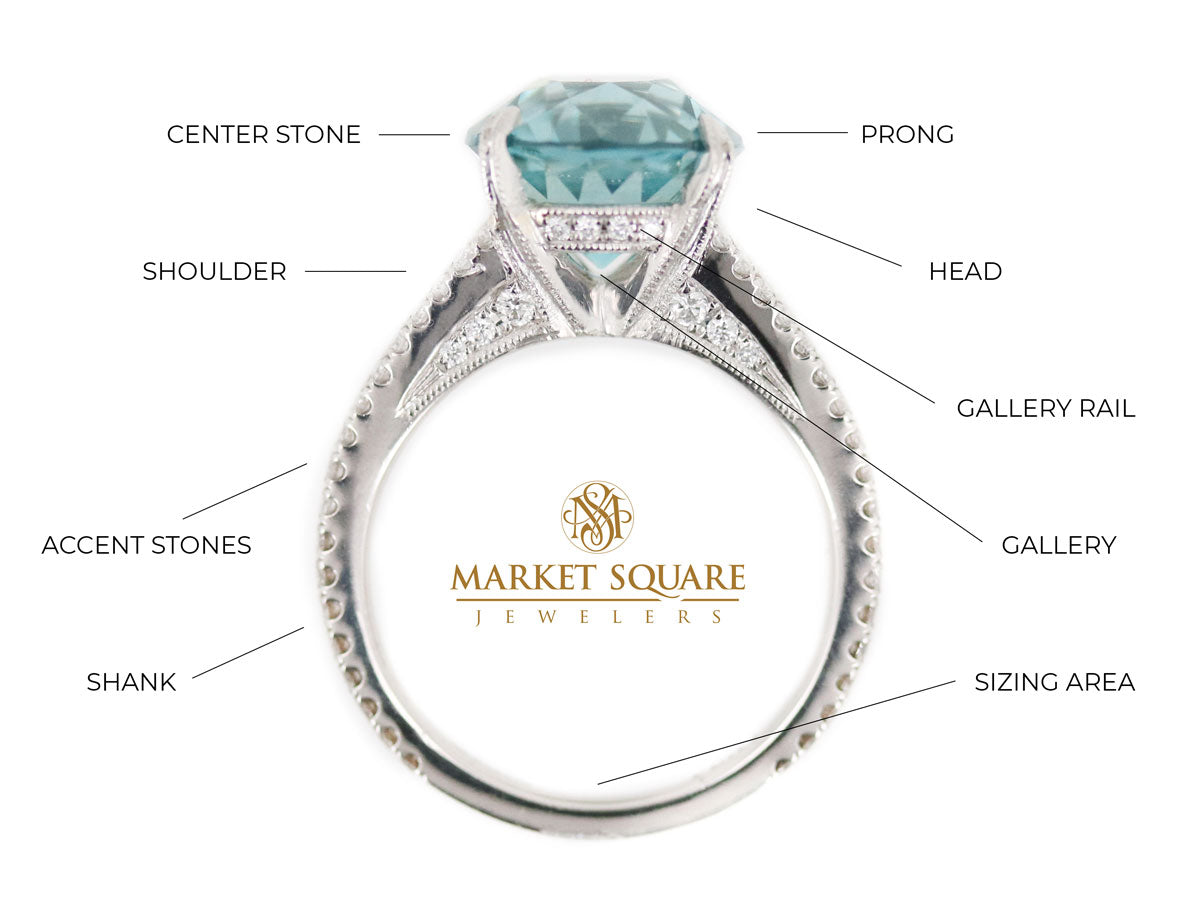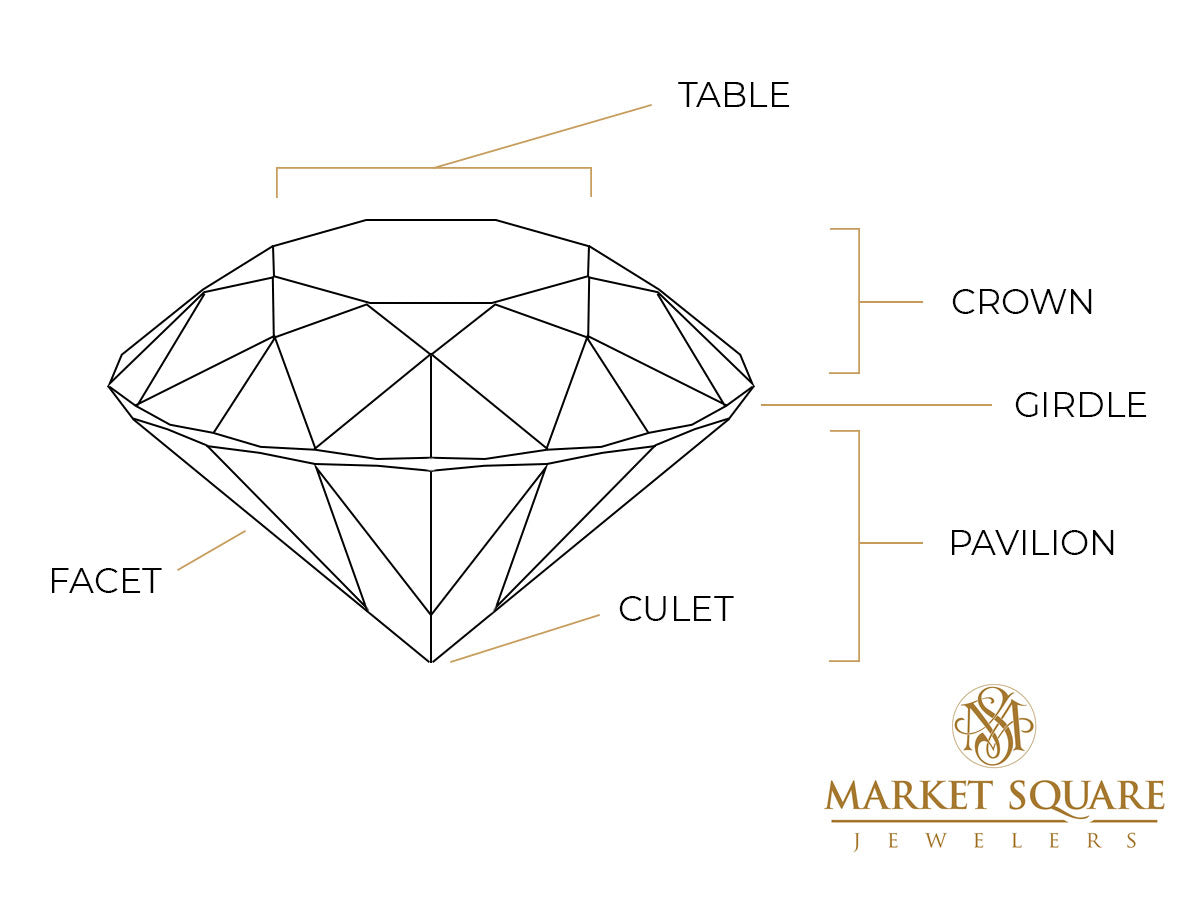BUY ONE GET ONE BAND 25% OFF! discount at checkout
BUY ONE GET ONE BAND 25% OFF! discount at checkout
BUY ONE GET ONE BAND 25% OFF! discount at checkout
BUY ONE GET ONE BAND 25% OFF! discount at checkout
Add description, images, menus and links to your mega menu
A column with no settings can be used as a spacer
Link to your collections, sales and even external links
Add up to five columns
Add description, images, menus and links to your mega menu
A column with no settings can be used as a spacer
Link to your collections, sales and even external links
Add up to five columns
October 17, 2019 3 min read
If you've ever taken a ring to a jewelry store to be repaired, or worked with a jeweler on a custom ring design, you may have gotten lost in all the terminology around ring parts and cut gems. From shanks to facets, it can get confusing, so we've compiled a couple of quick reference diagrams. Once you've learned the basics, it's a lot easier to communicate with a jeweler or salesperson about what you are looking for in your ring or gemstone. The terms we've defined are by no means exhaustive, but they will arm you with enough knowledge to speak about the anatomy of a ring with confidence.
Accent Stone - The smaller gemstones in a ring that are used to compliment or enhance the main stone.
Bridge - The underside of the band that is directly beneath the head.
Center Stone - The main stone of the ring, often the largest gemstone of the piece.
Gallery - The part of the head underneath the center stone, visible when the ring is in profile; it may be plain or embellished with filigree or accents stones.
Gallery Rail - Cross beam of metal that keeps the prongs on the sides of the stone in place.
Head - The portion of the ring that holds the center stone; included in the head are the prongs or bezel, the gallery, and the gallery rail.
Prong - The bit of metal that grabs the stone and holds it in place; prongs come in different styles and amounts depending on the ring.
Learn more about different types of heads and prong settings in our blog post: Engagement Ring Settings You Should Know
Semi-Mount / Mounting - The whole ring itself, not including any gemstones.
Shank - The band portion of the ring wraps around underneath your finger.
Shoulder - The top part of the band on either side of the head (just like the shoulders of a person).
Side Stone - A gemstone directly adjacent to the center stone, often smaller in size; sometimes "side stone" is used interchangeably with "accent stone".
Sizing Area (Base) - The base of the shank where ring sizing will occur; this is important to consider when having patterned, eternity, or tapered bands resized.
Tips - The ends of the prongs that actually touch the stone; a common ring repair is re-tipping to maintain gemstone security.

Crown - The top part of the gem, from the girdle to the table; usually height is referenced when discussing the crown.
Culet - The point on the underside of the gem at which the facets converge towards the center; the culet may range from a sharp point to flat.
Facet - The individual cut plains around the table and underneath the gem; the size, shape, angle, and amount of facets determine how the gem sparkles and are crucial to the overall appearance.
Girdle - The middle portion of the gem separating the crown (top) from the pavilion (lower part); this determines the shape of the gem when seen from above.
Pavilion - The lower part of the gem, from the girdle to the culet.
Table - The flat top of the gem; these will vary in proportion depending on the era from which the gem was cut.

There is much more to dive into in the world of jewelry anatomy, but these essential terms will greatly help you when discussing ring customization or repair with a professional. As always, stop into any of our locations to learn more, or talk with a professional about your repair or customization needs!
September 17, 2021 2 min read
July 26, 2021 4 min read
June 29, 2021 9 min read
Get 10% off your next purchase!

Get 10% off when you sign up for our newsletter!